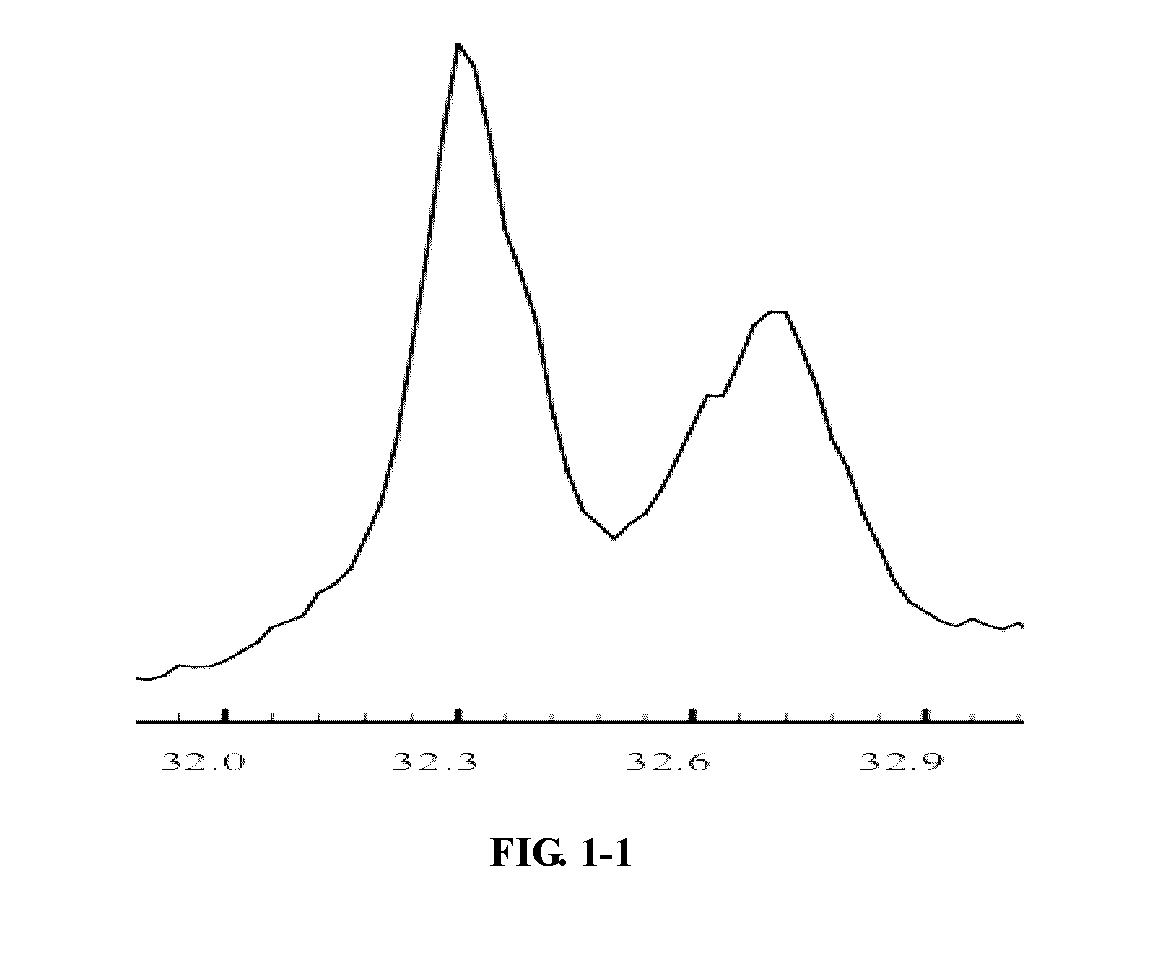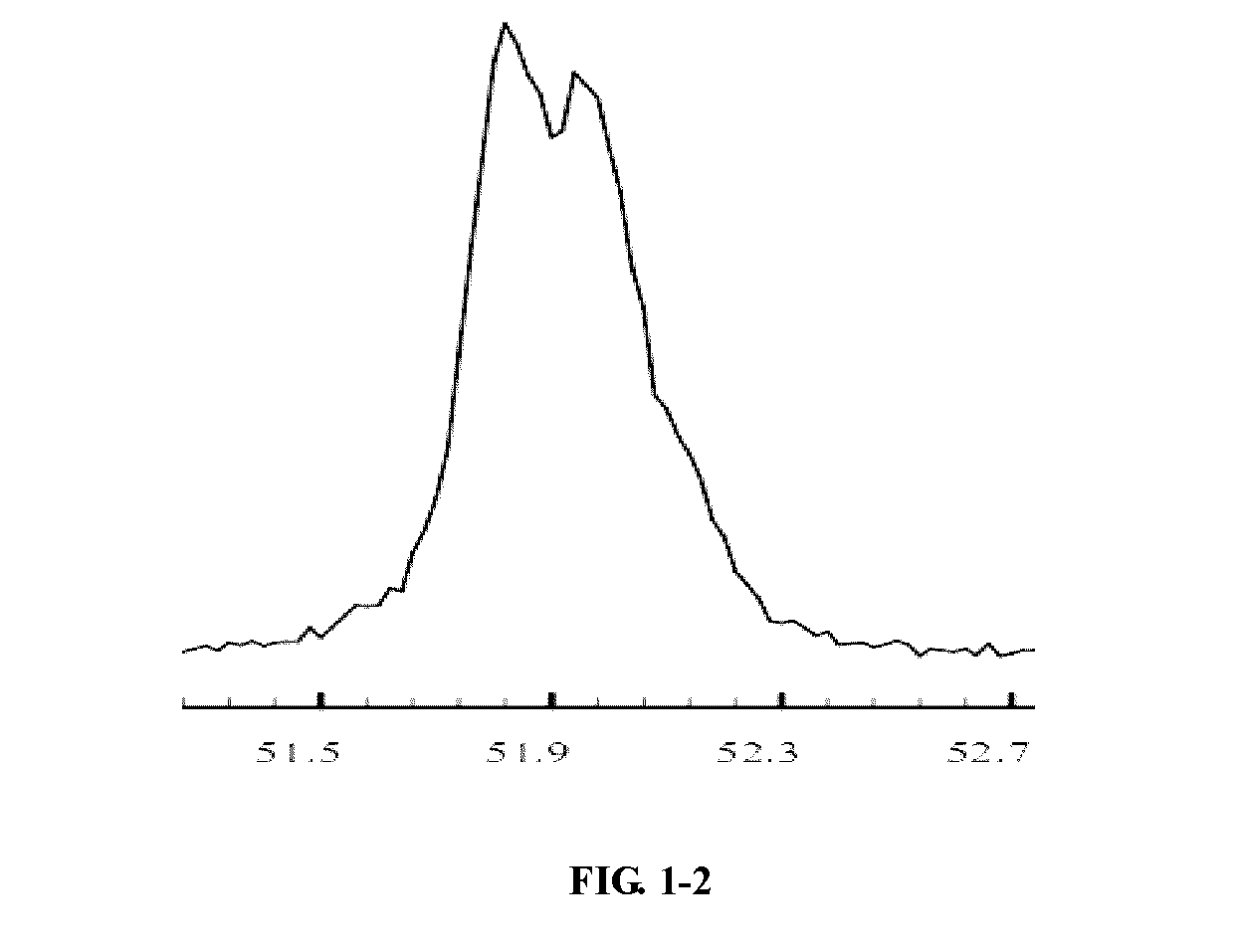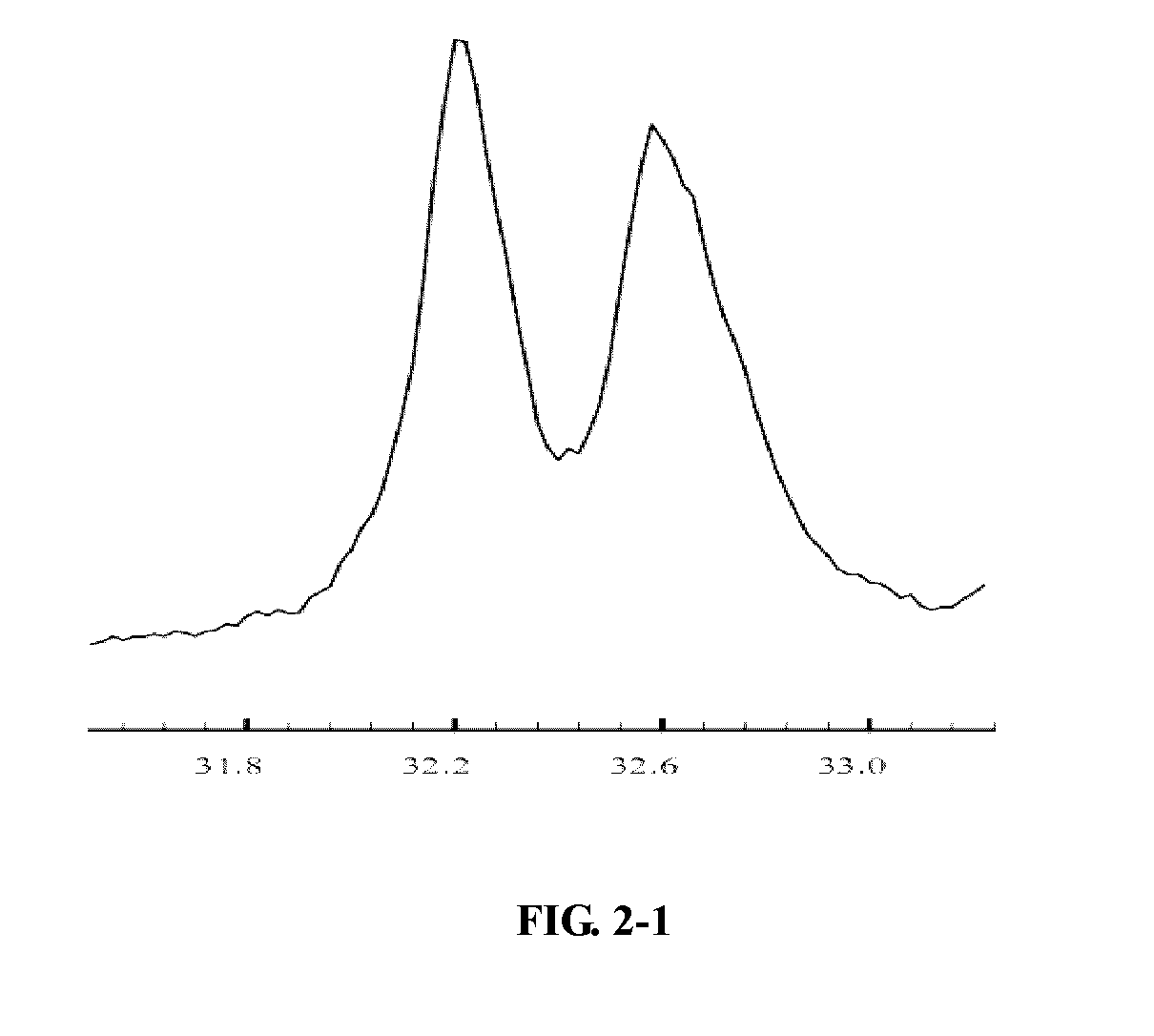Process for controlling a crystal form of alite in portland cement clinker
a technology of portland cement and clinker, which is applied in the direction of cement production and clinker production, can solve the problems of increasing energy consumption and achieve the effect of improving the performance of the portland cement clinker
- Summary
- Abstract
- Description
- Claims
- Application Information
AI Technical Summary
Benefits of technology
Problems solved by technology
Method used
Image
Examples
example 1
[0028](1) A prepared Portland cement raw meal is heated to 1450° C. and calcined for 1 h; and then cooled to form a cement clinker
[0029](2) The temperature of the Portland cement raw meal is increased at a rate of 5° C. / min until it reaches 1450° C., kept at this temperature for 30 min, and then is naturally cooled;
[0030](3) The cooled clinker is heated at a temperature below 800° C. The temperature is increased at a rate of 10° C. per minute until it reaches 1100° C. Subsequently, the clinker is kept at this temperature for 60 min and then naturally cooled;
[0031](4) The cooled clinker is grounded to a powder (e.g., with the aid of a ball mill. The specific surface area of this powder is 340 m2 / kg. The XRD pattern of Alite in the clinker of Xuchou Huaihai Cement Factory without thermal treatment are shown in FIG. 1 and FIG. 2. It can be seen that after calcination at 1100° C. for 60 min, the crystal form of Alite in Portland cement clinker of Huaihai Cement Factory is changed from M...
example 2
[0035](1) A prepared Portland cement raw meal was heated to 1480° C., calcined for 0.5 h, and then cooled;
[0036](2) The temperature of the Portland cement raw meal was increased at a rate of 10° C. / min until it reached 1500° C., and kept at this temperature for 60 min, and then it was naturally cooled;
[0037](3) The cooled clinker was heated at a temperature below 700° C. The temperature was increased at a rate of 15° C. / min until it reached 1000° C. Subsequently, the said clinker was kept at this temperature for 90 min, and then naturally cooled The clinker was grounded to powder (e.g., with the aid of a ball mill). The resulting specific surface area of this powder was 350 m2 / kg;
[0038](4) 4 g gypsum was added to 96 g of the cement clinker obtained as discussed above. The mixture was stirred uniformly. Subsequently, 29 mL of water (ratio between water and cement w / c=0.29) was added, the said mixture was stirred and molded to form 20×20×20 mm samples. The 3d and 28d compressive stren...
example 3
[0041](1) The prepared Portland cement raw meal was heated to 1450° C. and calcined for 1 h and then cooled;
[0042](2) The temperature of said Portland cement raw meal was increased at a rate of 5° C. / min until it reached 1450° C. and kept at this temperature for 60 minutes. Then, the mixture enters a cooling machine and the temperature of this mixture was decreased at a rate of 55° C. / minute;
[0043](3) The temperature was cooled to 1000° C. and the mixture was kept at this temperature for 60 minutes;
[0044](4) 4 g gypsum was added to 96 g of the cement clinker obtained as discussed above, and the mixture was stirred uniformly. Subsequently, 29 mL water (ratio between water and cement w / c=0.29) was added. The mixture was stirred and molded to form 20×20×20 mm samples. The 3d and 28d compressive strength of samples was determined.
[0045]Samples were first cured in a curing box for 24 h, where the relative humidity was 90% and the temperature was 20±2° C., and then knockout sample was cur...
PUM
| Property | Measurement | Unit |
|---|---|---|
| temperature | aaaaa | aaaaa |
| temperature | aaaaa | aaaaa |
| temperature | aaaaa | aaaaa |
Abstract
Description
Claims
Application Information
 Login to View More
Login to View More - R&D
- Intellectual Property
- Life Sciences
- Materials
- Tech Scout
- Unparalleled Data Quality
- Higher Quality Content
- 60% Fewer Hallucinations
Browse by: Latest US Patents, China's latest patents, Technical Efficacy Thesaurus, Application Domain, Technology Topic, Popular Technical Reports.
© 2025 PatSnap. All rights reserved.Legal|Privacy policy|Modern Slavery Act Transparency Statement|Sitemap|About US| Contact US: help@patsnap.com



